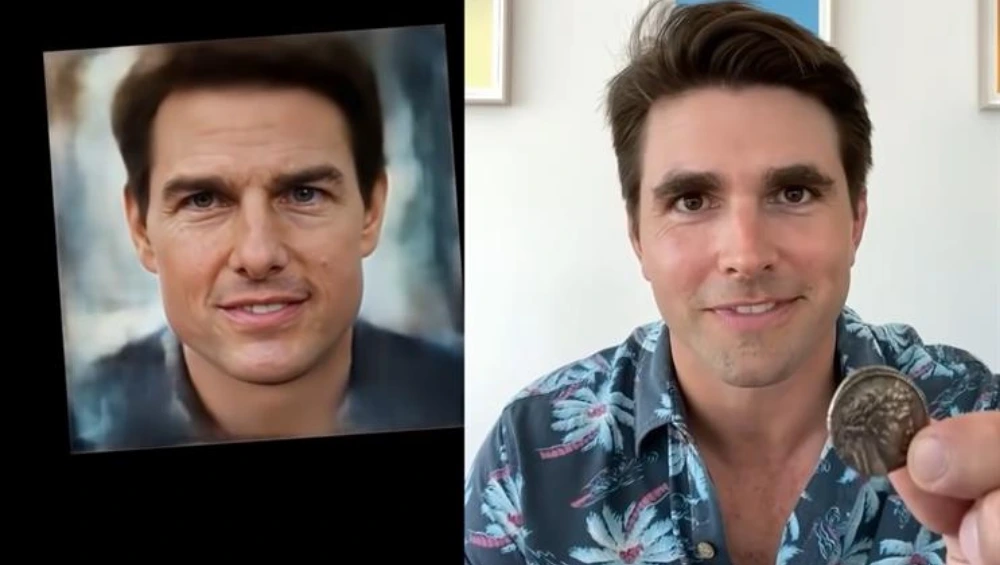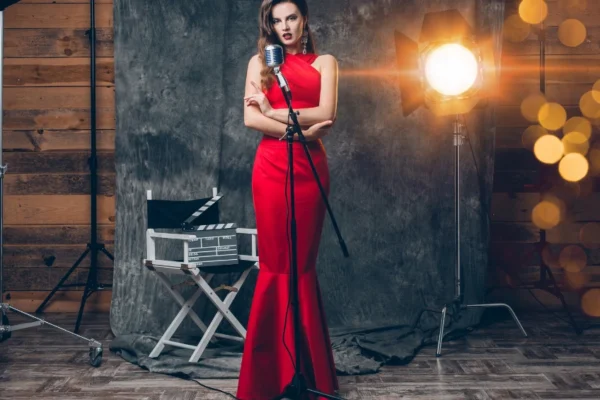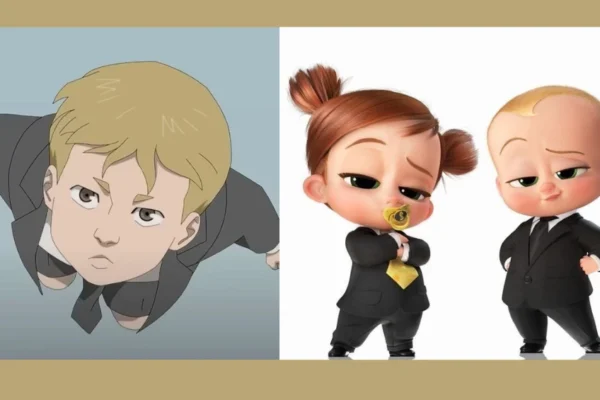Have you ever seen a video of your favorite celebrity saying something they never actually said? Or maybe doing something that seems totally out of character? Welcome to the world of celebrity deepfakes. This technology is changing everything we know about fame, privacy, and what’s real online.
Deepfake technology uses artificial intelligence to create videos that look incredibly real. But they’re completely fake. And celebrities are the biggest targets. From Taylor Swift to Bollywood stars, no one seems safe from this digital trickery.
But here’s the scary part. A recent study found that 96% of all celebrity deepfakes online target women. Most of these are non-consensual adult content. That’s not just creepy, it’s harmful and illegal in many places.
What Are Celebrity Deepfakes?
Celebrity deepfakes are fake videos or images that use AI to make it look like a famous person said or did something they never actually did. The technology behind this is pretty complex, but the basic idea is simple. Computer programs learn how someone’s face moves and talks by studying thousands of photos and videos.
The AI then uses this information to put that person’s face onto someone else’s body. Or make them say words they never spoke. The results can be so realistic that it’s hard to tell what’s real and what’s fake.
Machine learning makes this possible. It’s like teaching a computer to be really good at copying someone’s appearance. The more data it has, the better it gets at creating convincing fakes. Some celebrity deepfakes are so good that even experts have trouble spotting them.
But not all celebrity deepfakes are bad. Some are made for fun or entertainment. Like when someone makes a funny video of a celebrity singing a silly song. The problem comes when celebrity deepfakes are used to hurt people or spread lies.
Celebrities Targeted by Deepfakes
Famous people deal with celebrity deepfakes more than anyone else. Why? Because there are tons of photos and videos of them online. This gives AI programs lots of material to work with.
Taylor Swift became a major victim of celebrity deepfakes in early 2024. Fake explicit images of her spread across social media platforms. Millions of people saw these images before they were taken down. The incident sparked outrage and calls for better protection against celebrity deepfakes.
Bollywood actor Akshay Kumar also faced celebrity deepfake problems. Fake videos showed him endorsing political candidates he never supported. These videos spread during election time, potentially influencing voters with false information.
Other celebrities like Scarlett Johansson, Emma Watson, and many K-pop stars have also been targeted by celebrity deepfakes. The impact goes beyond just embarrassment. These fake videos can damage their careers, personal relationships, and mental health.
For many celebrities, celebrity deepfakes feel like a violation of privacy. They can’t control how their likeness is being used. And once these fake videos are online, they can be nearly impossible to completely remove.
The Rise of Deepfake Pornography
Here’s where things get really serious. Most celebrity deepfakes aren’t funny memes or harmless jokes. They’re non-consensual adult content. And the numbers are shocking.
Research shows that deepfake pornography makes up the vast majority of all celebrity deepfakes content online. Women are targeted in almost every case. Celebrities, politicians, and even regular people have had their faces placed on explicit content without permission.
The legal system is struggling to keep up. Many countries don’t have specific laws against deepfake pornography yet. This leaves victims with few options for getting justice or having the content removed.
Social media platforms are trying to fight back. Sites like Twitter, Facebook, and Instagram have banned deepfake pornography. But new content appears faster than it can be removed. It’s like playing whack-a-mole with technology.
Some governments are taking action. The UK recently made deepfake pornography illegal. Other countries are working on similar laws. But enforcement is still a huge challenge because the internet has no borders.
The psychological impact on victims of celebrity deepfakes is severe. Many report feeling violated, anxious, and helpless. Some have needed therapy to cope with having fake explicit videos of themselves spread online.
Deepfakes in Advertising and Entertainment
Not all celebrity deepfakes are harmful. Some companies use this technology for advertising and entertainment. And sometimes, it’s actually pretty cool.
Cadbury used celebrity deepfake technology to create personalized ads. They made videos where celebrities appeared to wish people happy birthdays or congratulate them on achievements. The ads felt personal and special to viewers.
Pepsi created campaigns using celebrity deepfake technology to bring back retired athletes for new commercials. Fans got to see their sports heroes “return” to promote products. The company was upfront about using AI, so no one was being deceived.
Zomato, a food delivery app, used celebrity deepfakes to create funny videos with celebrities. These ads went viral and helped the brand connect with younger audiences. The key difference? Everyone knew the videos were fake from the start.
The entertainment industry is exploring celebrity deepfakes for movies and TV shows. Actors who have passed away can be digitally recreated for new projects. Or aging actors can appear younger without expensive makeup and special effects.
But even positive uses of celebrity deepfakes raise questions. Should companies be able to use someone’s likeness without permission? What happens when the technology becomes so good that audiences can’t tell what’s real anymore?
Legal and Ethical Implications
The law is playing catch-up with celebrity deepfake technology. Right now, there’s a patchwork of regulations that don’t cover everything. Some places have strong protections, others have almost none.
In the United States, some states have passed anti-celebrity deepfake laws. California makes it illegal to create celebrity deepfake pornography without consent. Texas has similar rules for political celebrity deepfakes during elections. But federal law is still catching up.
Europe is moving faster on celebrity deepfake regulation. The EU’s Digital Services Act requires platforms to remove harmful celebrity deepfake content quickly. They’re also working on broader AI regulations that could cover celebrity deepfakes.
The biggest challenge is enforcement. Celebrity deepfakes can be created anywhere and shared everywhere. How do you prosecute someone in another country for making a fake video? How do you prove who actually made it?
There are also free speech concerns. Some celebrity deepfakes are clearly meant as parody or political commentary. Where’s the line between harmful fake content and protected expression?
Legal experts say we need new laws specifically designed for the digital age. Old privacy and defamation laws weren’t written with AI in mind. They often don’t provide enough protection against celebrity deepfakes.
Detecting and Preventing Deepfakes
The same AI technology that creates celebrity deepfakes is being used to fight them. It’s like a digital arms race. As celebrity deepfakes get better, detection tools improve too.
Tech companies are developing sophisticated detection systems. These programs look for subtle signs that a video has been altered. Things like unnatural blinking patterns, inconsistent lighting, or weird facial movements that humans might miss.
Microsoft created a celebrity deepfake detection tool that can spot fakes with good accuracy. Facebook funded research into detection technology and created datasets to help other researchers. Google has similar projects working on the problem.
But detection isn’t perfect. As celebrity deepfakes technology improves, it becomes harder to spot fakes. Some experts worry that we’re heading toward a future where detection tools can’t keep up with creation tools.
Individuals can protect themselves too. Being skeptical of shocking videos, especially during election seasons or controversial events, is important. Checking multiple sources before believing or sharing content helps stop the spread of fake videos.
Organizations are training employees to spot celebrity deepfakes. Media companies are especially focused on this because they could accidentally report on fake content as if it were real news.
The most important defense might be education. Teaching people about celebrity deepfakes and how they work makes everyone better at spotting them. When more people know what to look for, fake content has less power to deceive.
The Future of Celebrity Representation
Celebrity deepfake technology is changing how celebrities connect with their fans. And not all of these changes are bad. Some could actually make entertainment more exciting and personal.
Virtual performances are becoming possible. Imagine seeing your favorite musician “perform” a private concert just for you. Or having a movie star give you personalized advice. Celebrity deepfake technology could make these experiences feel real and special.
Digital avatars are another possibility. Celebrities could create AI versions of themselves to interact with fans on social media. These avatars could answer questions, make appearances, or even create new content when the real celebrity is busy.
But this raises big questions about authenticity. If fans are interacting with an AI version of a celebrity, are they really connecting with that person? What happens to the genuine human connection that makes celebrity culture meaningful?
Some celebrities are embracing the technology. They’re working with companies to create official AI versions of themselves. This way, they control how their likeness is used while still giving fans new ways to interact with them.
The key is finding balance. Technology should enhance the celebrity-fan relationship, not replace it entirely. People still want to know that somewhere behind the AI and special effects, there’s a real human being.
Ethical guidelines are being developed for celebrity deepfake AI use. These rules help ensure that technology is used responsibly and that both celebrities and fans are protected from potential harm.
Conclusion
Celebrity deepfakes represent both the promise and the peril of AI technology. They show us amazing possibilities for entertainment and personal connection. But they also reveal serious threats to privacy, truth, and personal safety.
The technology isn’t going away. If anything, it’s going to get better and more accessible. That means we all need to get smarter about living in a world where seeing isn’t always believing.
Celebrities, tech companies, governments, and regular people all have roles to play in shaping how this technology is used. We can choose to use celebrity deepfakes to create amazing experiences and bring people together. Or we can let them be used to hurt people and spread lies.
The future of celebrity deepfakes depends on the choices we make today. By supporting responsible development, pushing for strong laws, and staying educated about the technology, we can help ensure that AI serves everyone’s interests.
Ready to learn more about staying safe in the digital age? Share this article with friends and family to help them understand the world of celebrity deepfakes. Knowledge is our best defense against digital deception.








